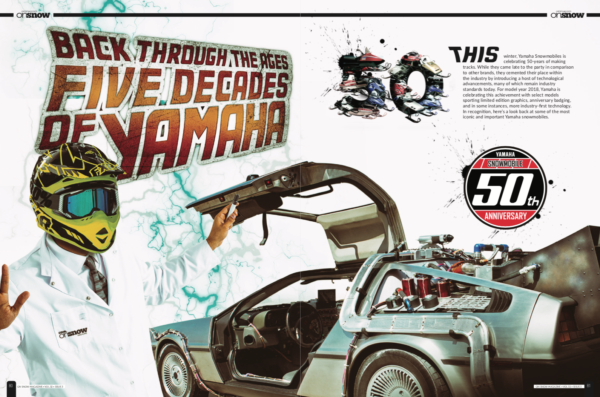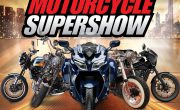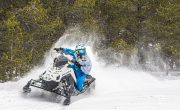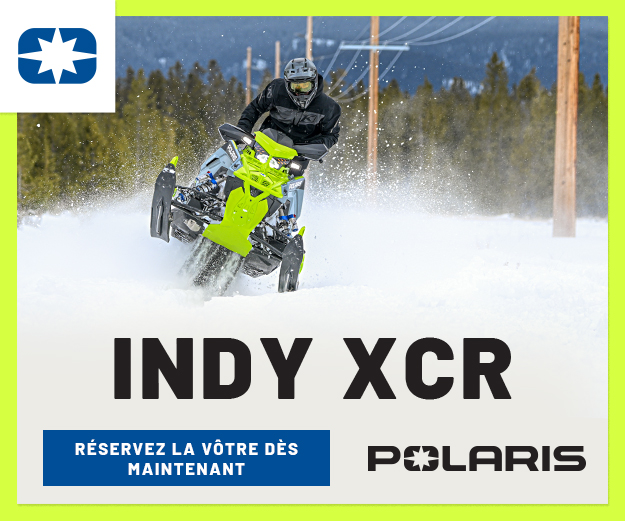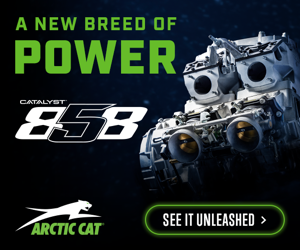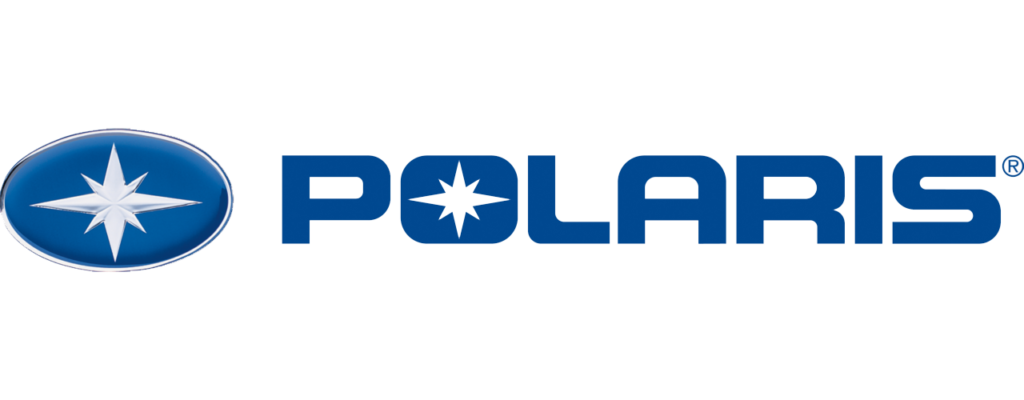FIVE DECADES OF YAMAHA
Last winter, Yamaha snowmobiles celebrated 50-years of making tracks. While they came late to the party in comparison to other brands, they cemented their place within the industry by introducing a host of technological advancements, many of which remain industry standards today. For model year 2018, Yamaha is celebrating this achievement with select models sporting limited edition graphics, anniversary badging, and in some instances more industry-first technology. In recognition, here’s a look back at some of the most iconic and important Yamaha snowmobiles.
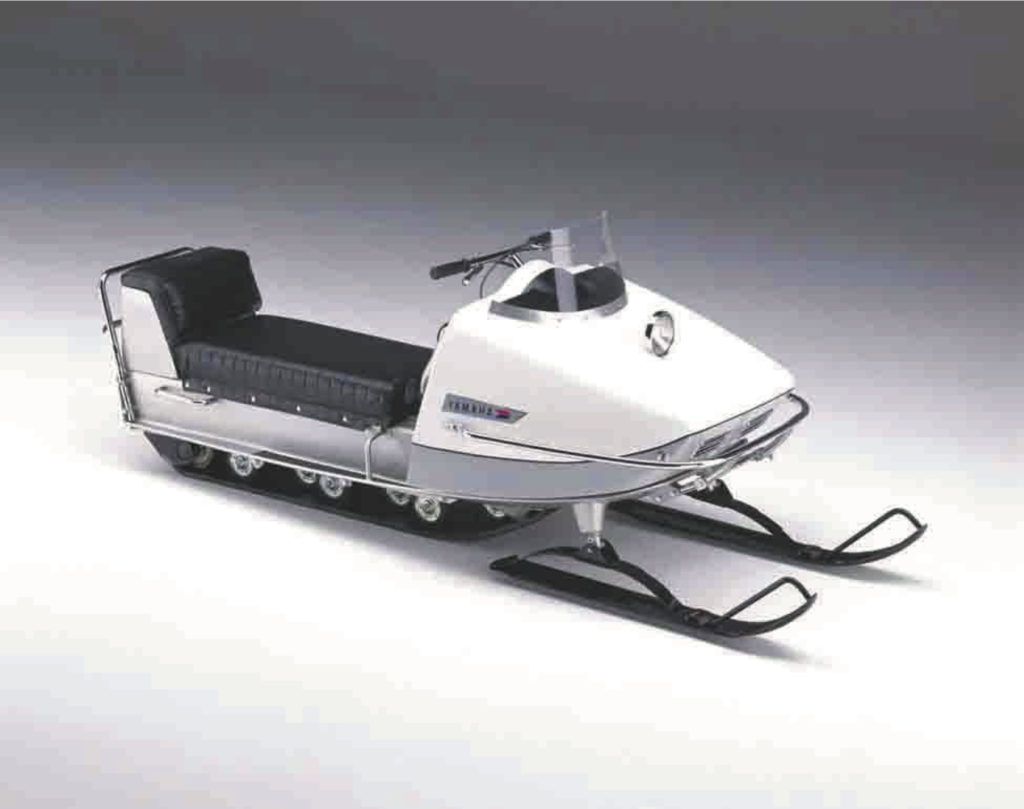
1968 SL350
To get the ball rolling, Yamaha built just 300 of this 1968 model, and the number still known to exist today is much smaller. They are in many ways, very different than the full production 1969 SL351 most remember as being the “first” Yamaha. The SL350 was first introduced in September of 68 at a trade show in Chicago. The 1969 SL351 borrowed heavily from Yamaha’s engine expertise in motorcycles, and the twin-cylinder two-stroke engine demonstrated this accordingly with its aluminum cooling fins, five-port design, and Yamaha’s exclusive Autolube oil-injection system, a first for the industry.
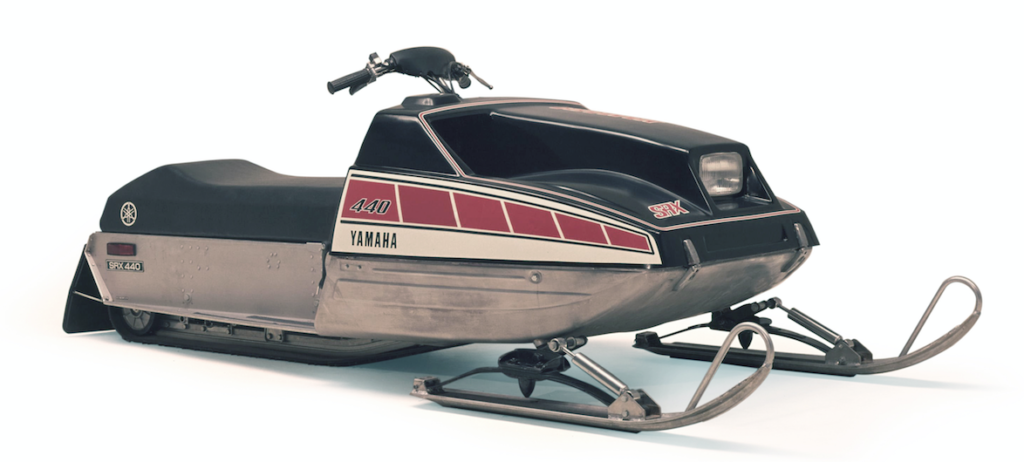
1976 SRX440
Yamaha had plenty of success between 1968 and the arrival of the SRX440 and little brother 340 in 1976. Sleds like the air-cooled GPX and the opportunity to purchase factory tune pipes for select models, something that was unheard from other brands, had firmly positioned Yamaha as a leading brand in just a few short years. The SRX however, was a sled that further catapulted Yamaha forward in sheer technological might. Featuring an innovative radiator and heat exchanger cooling system, the SRX was incredibly light and incredibly fast. The SRX would become a force to be reckoned with on the race tracks and remains highly coveted amongst collectors.
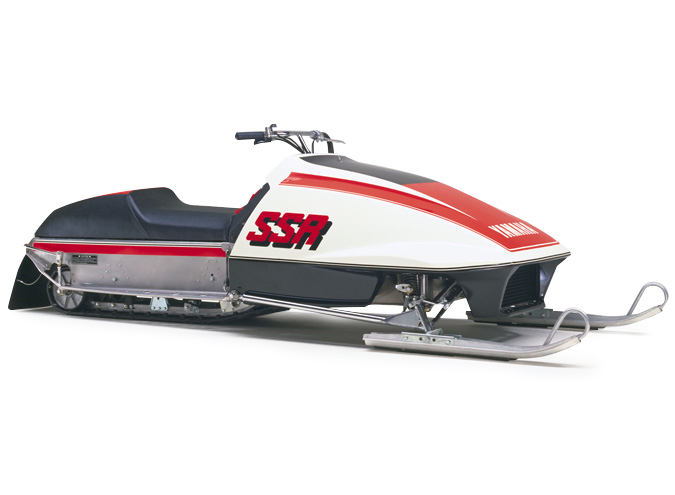
1978 SSR440
While not a consumer sled, this production racer demonstrated the seriousness of Yamaha’s racing efforts in ice ovals, the then preeminent form of snowmobile competition. With an extremely low center of gravity, comprised of lightweight components, and featuring an independent front suspension, it was Yamaha’s first foray into independent design. Soon after, the company would chart their own unique course in independent ski suspension development with struts and market share leadership would soon follow.
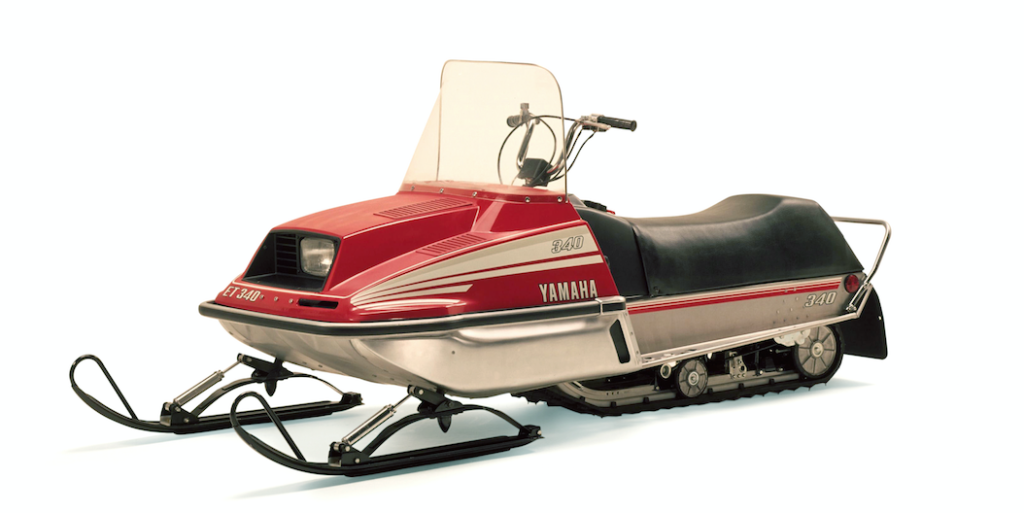
1978 ENTICER 340
No mention of Yamaha’s snowmobile history would be complete without the inclusion of the Enticer. It would prove to the be the ultimate “starter” sled for thousands of snowmobilers and it remains as coveted today as it was then. Powered by a tough-as-nails fan cooled engine, the Enticer was light, fun, and delivered a level of dependability that was thought to be nearly impossible in the 1970s. It would become the template by which all other “entry” sleds would be measured, and in many ways still are today.
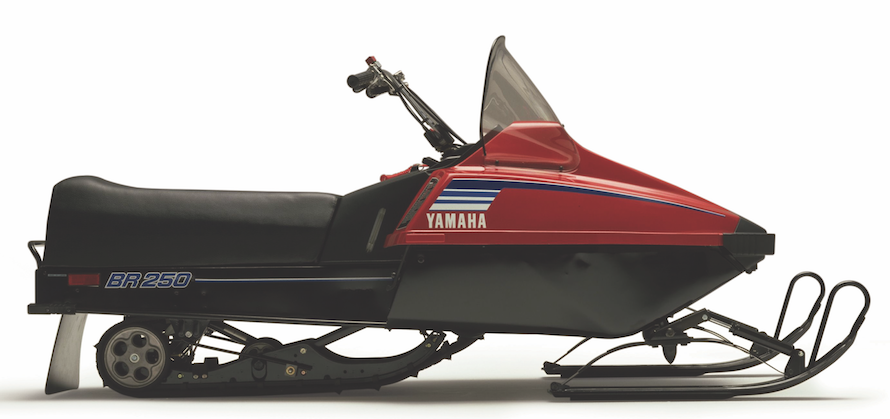
1982 BRAVO 250
Hot of the success of the Enticer, Yamaha continued to look for ways to get more new riders into the sport during hard times for the industry. Their answer was the lightweight and very affordable Bravo. Powered by a simple 250 two-stroke single, the Bravo proved to be an enormous success, so much in fact, it would become the company’s longest running model. It’s not unusual to see Bravo models making laps in back yards across the snowbelt to this day, as rugged and reliable now as they were then.
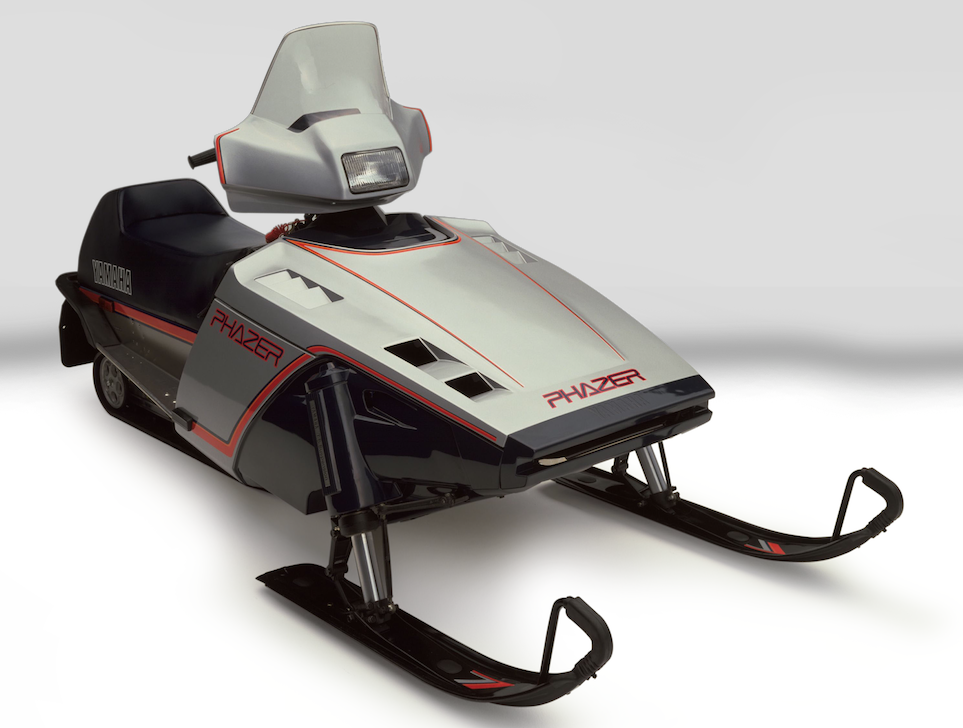
1984 PHAZER
There is no other snowmobile in Yamaha’s 50-year history that is more significant or more recognizable than the Phazer. It was a dramatic departure from the norm, for both Yamaha and the industry. The space age design however, captured the imagination of snowmobilers everywhere, and the sleds lightweight, go-anywhere, over-achieving, and bullet-proof performance helped to propel Yamaha to the forefront of the industry. In fact, the Phazer became the world’s best-selling snowmobile, and according to Yamaha, it retains that honor today.
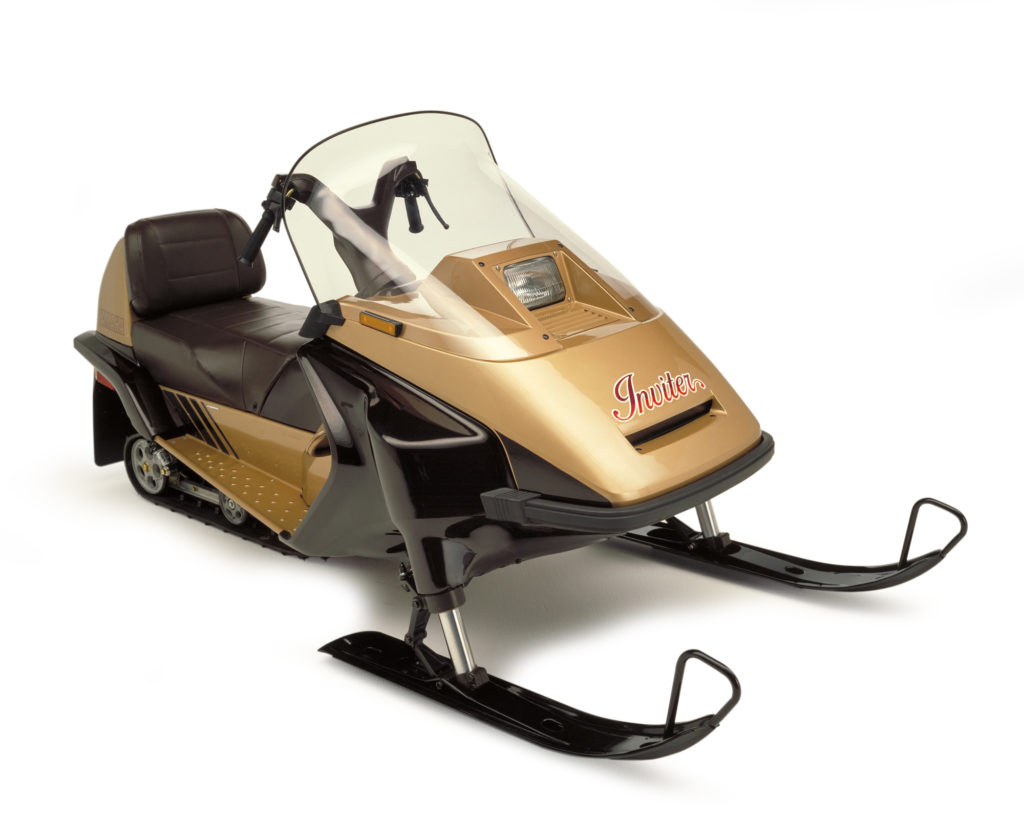
1986 INVITER
If you take the time to visit Yamaha’s corporate website where they highlight significant vehicles throughout the company’s history, or even take a gander at their brief 50th look back in their 2018 snowmobile brochure, you won’t see the Inviter anywhere. Most likely because when it was introduced it failed to meet expectations and sold just a poorly. Yamaha was most likely looking to capture lightning in a bottle twice, after the runaway success of the Phazer. As the market share leader, Yamaha felt it was their duty to play this role to its fullest, and that meant looking for ways to get more new people into the sport. The Inviter was one such attempt, and for that reason, as well as the breakout design the Inviter introduced, the sled is an important footnote in Yamaha’s history. Being a leader comes with responsibility, even when the product isn’t successful.
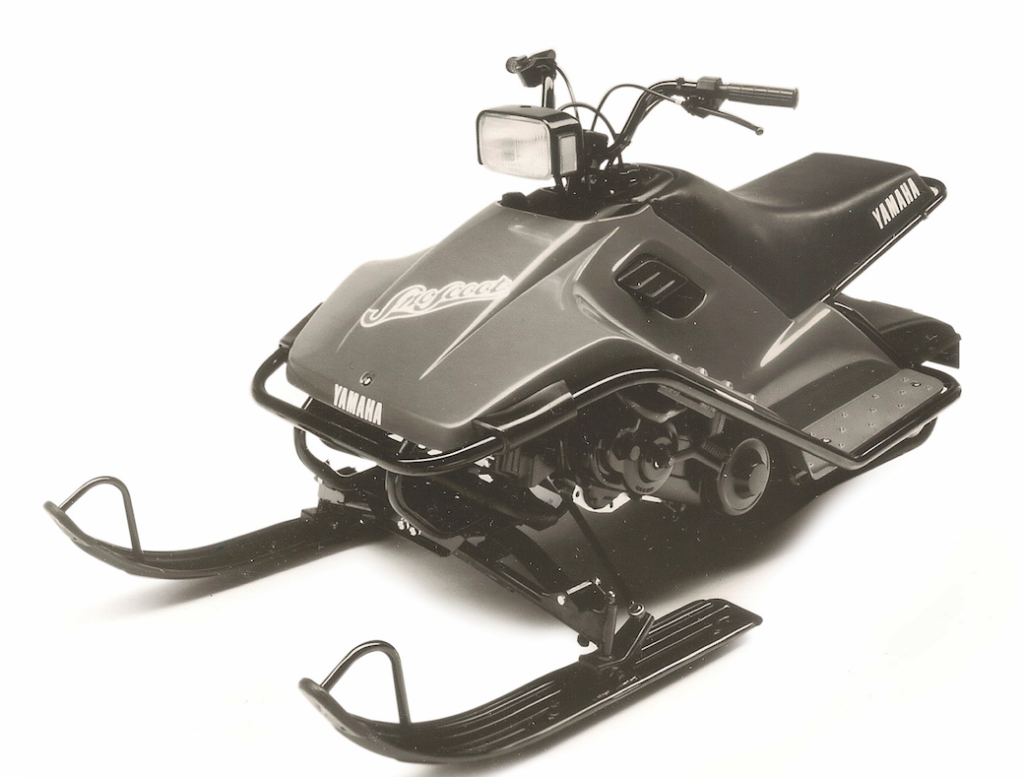
1988 SNOSCOOT
Another example of Yamaha’s desire to grow the sport while enjoying the market share driver’s seat came in 1988. The SnoScoot was vastly different and was in fact a hit. But the sleds initial success with dealers is also what cut the model run short. Dealers were so enamored with the little scooter turned snowmobile, they ordered far more than demand could handle. Soon carry-over units were piling up at dealerships and Yamaha was forced to blow them out at discount prices, hurting the sleds long term potential. Of course, in later years, the SnoScoot and bigger brother SnoSport became highly coveted, fetching as much as three times their original value.
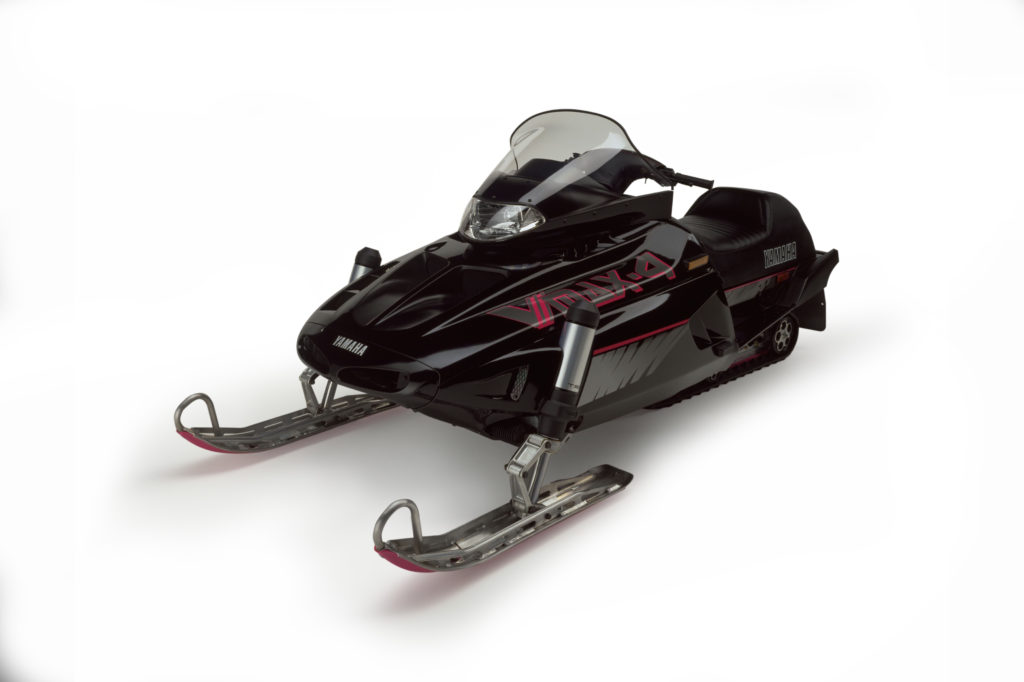
1992 VMAX 4
It was the era of the muscle sled, horsepower and speed ruled the day. Where others offered triples and big displacement twins with tuned pipes, Yamaha approached the muscle game with a snowmobile that would shock the industry. This was no “me too” effort. Featuring two twin-cylinder two-strokes conjoined by a crankshaft, the four-cylinder muscle sled was a vehicle only Yamaha could bring to market. Nothing looked like it, nothing sounded like it, and nothing performed like it. While heavy, the smooth flowing power was completely unlike any other muscle sled of the day. The VMAX-4 may not have been the fastest, but it was far and away the most technically advanced and refined.
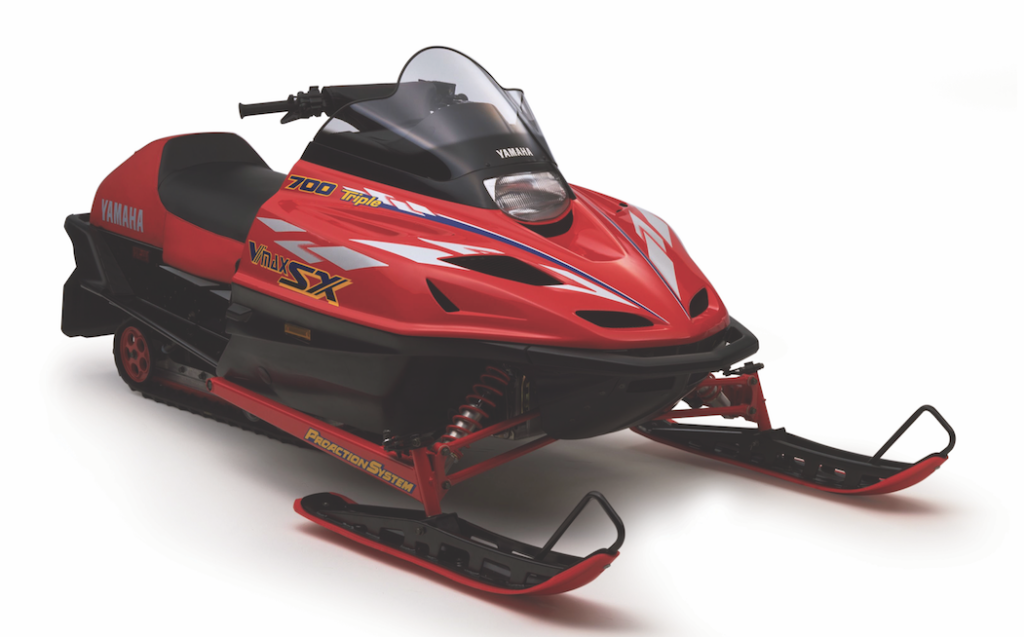
1997 VMAX 700 SX
By the mid 1990s, the snowmobile landscape had changed dramatically. The suspension wars were in full swing and Polaris had risen to the top of the heap, thanks to the success of their independent front suspension Indy. Others followed suit in hopes of grabbing a piece of the fast-growing Polaris pie, and in 1997 Yamaha followed suit, abandoning their strut suspension which at one time helped the Phazer climb to the top of the heap. In its place was an all-new trailing arm suspension called the Pro Action, and when harnessed with the smooth, quick revving power of Yamaha’s engine, became an immediate success.
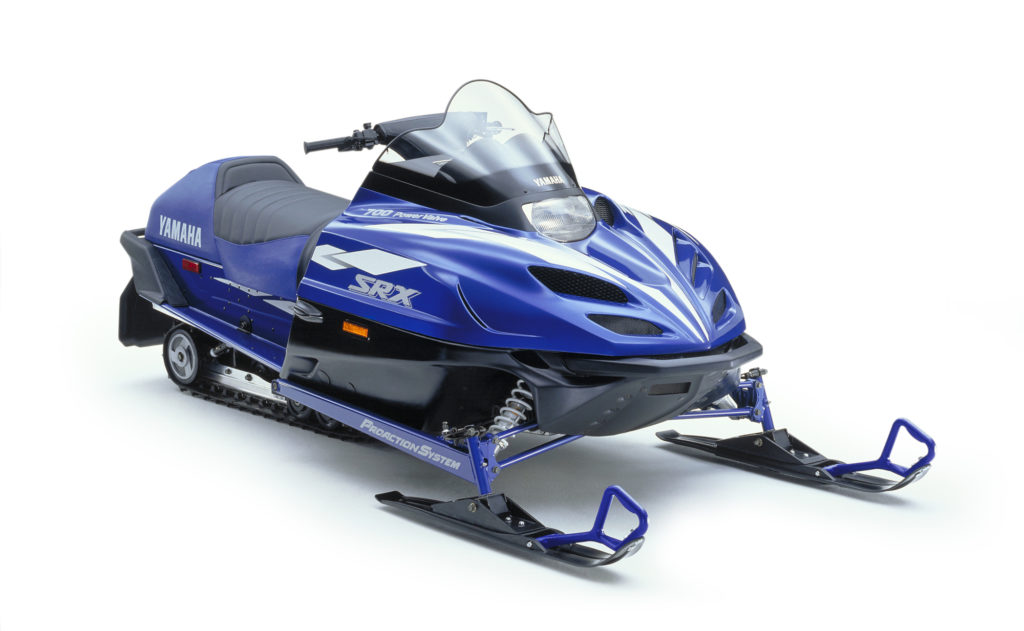
1998 SRX 700
With suspension innovation taking center stage, the muscle era was starting to wane, but it still played a significant role in everyone’s new model portfolio. Knowing they needed a new trump card, Yamaha demonstrated their engine building expertise in spades with the introduction of the triple/triple SRX 700. Featuring an all-new engine with electronic power valves, flat slide carbs, and digital ignition, it was nothing short of a lake racing weapon with a level of refinement and smoothness that is still spoken of in high regard today.
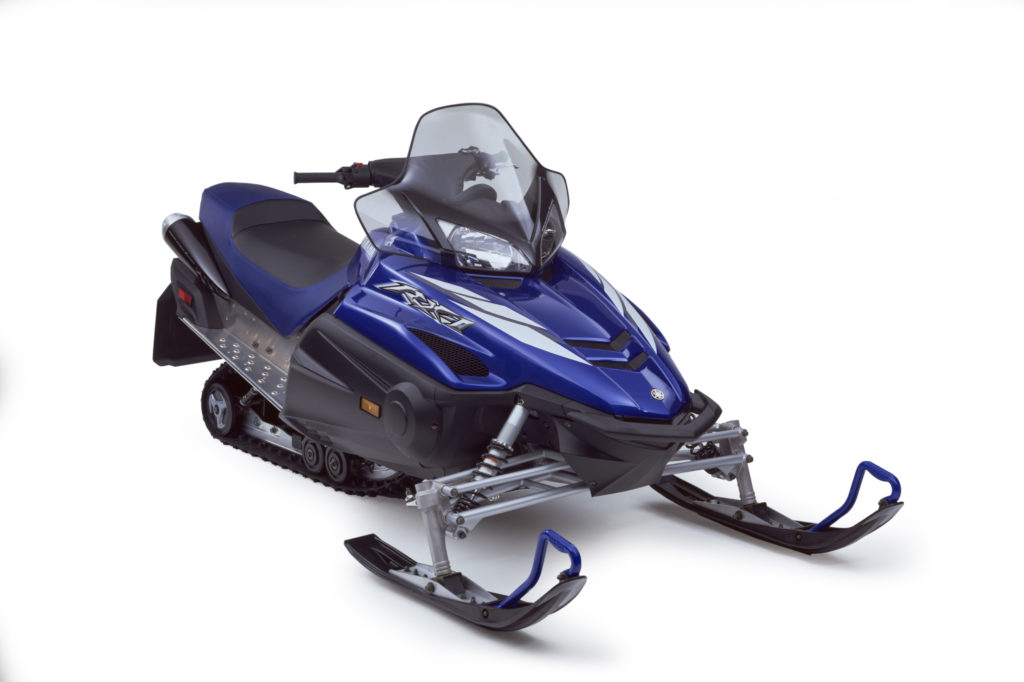
2003 RX1
If the 1984 Phazer is the most significant sled in Yamaha’s 50-year history, the 2003 RX1 is easily number two. While not the first four-stroke sled in the industry, the RX1 was the first performance four-stroke that proved to the disbelievers that power, performance, and fun could come in the shape of four-cycle power. The high-tech four-cylinder borrowed heavily from Yamaha motorcycle road racing division, and the sweet sounding rear exit exhaust transformed the industry and carved out a formidable four-stroke segment of the market that remains today.
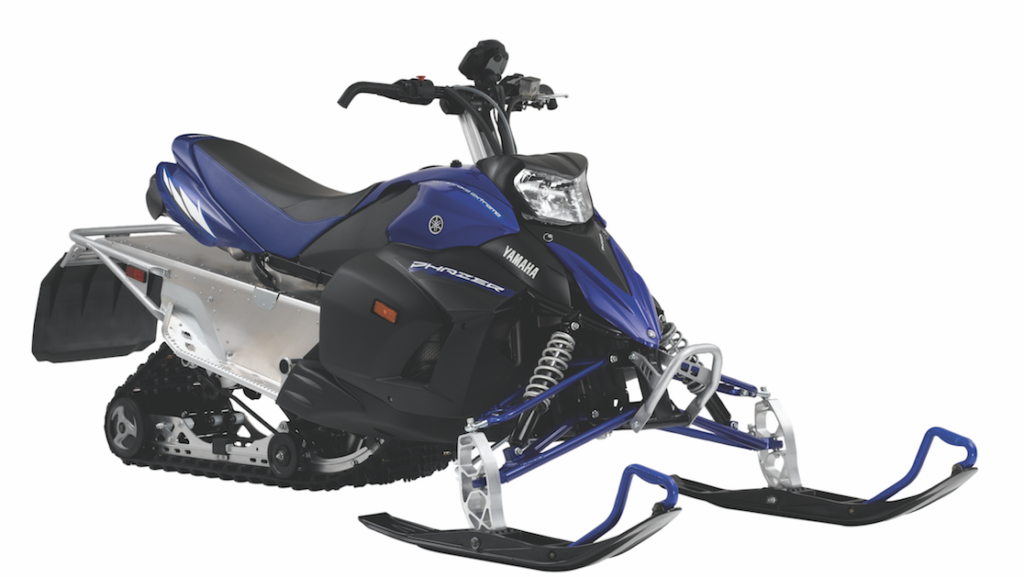
2007 PHAZER
With enthusiasts calling for lighter sleds and reduced retail pricing, Yamaha once again broke away from the pack and charted new ground with the 2007 Phazer. Designed to be light, nimble, comfortable, fun, and customizable, the Phazer was unique in every way. With an MSRP of just $6,399 for the base model and delivering formidable performance from its 80-horsepower, 500cc two-cylinder four-stroke engine, the Phazer left the gate with plenty of traction. But a flooded used market, sagging industry sales, and a Phazer platform that remained virtually unchanged for several years saw the spark and opportunity of the Phazer glimmer and fade over time. None the less, the Phazer represented another example of Yamaha willing to take a significant product risk.
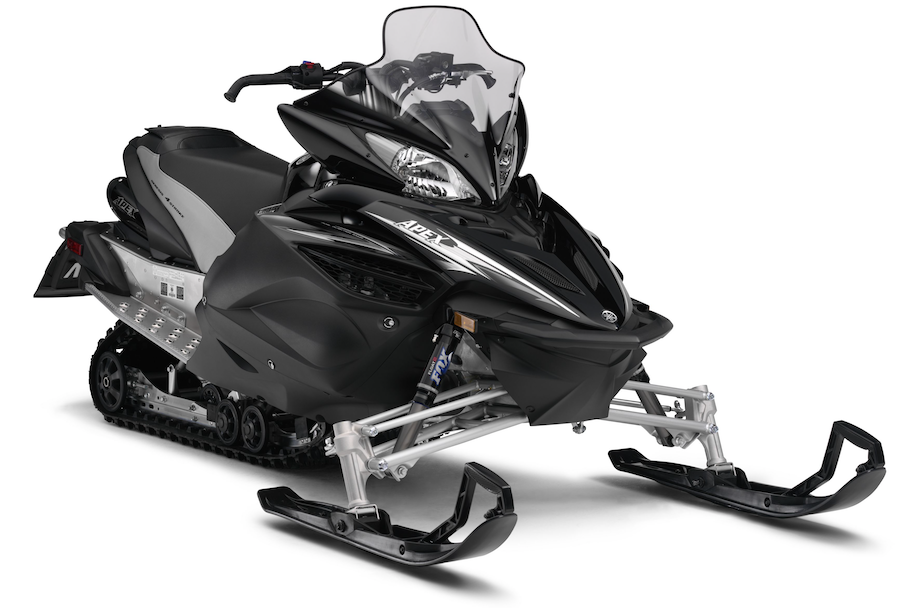
2011 APEX
It had been ten years since Yamaha made the decision in 2001 to eventually walk-away from two-strokes and become a four-stroke only snowmobile company. Leading the pack was the Apex. Year-over-year, the Apex received refinements and tweaks making it the most successful and popular four-stroke snowmobile in the industry. It was in model year 2011, when Yamaha introduced another first to the industry in the form of Electric Power Steering (EPS). The fluid and effortless nature transformed the Apex into an even better high-performance trail machine, and erased the “heavy” four-stroke stigma in the minds of many.
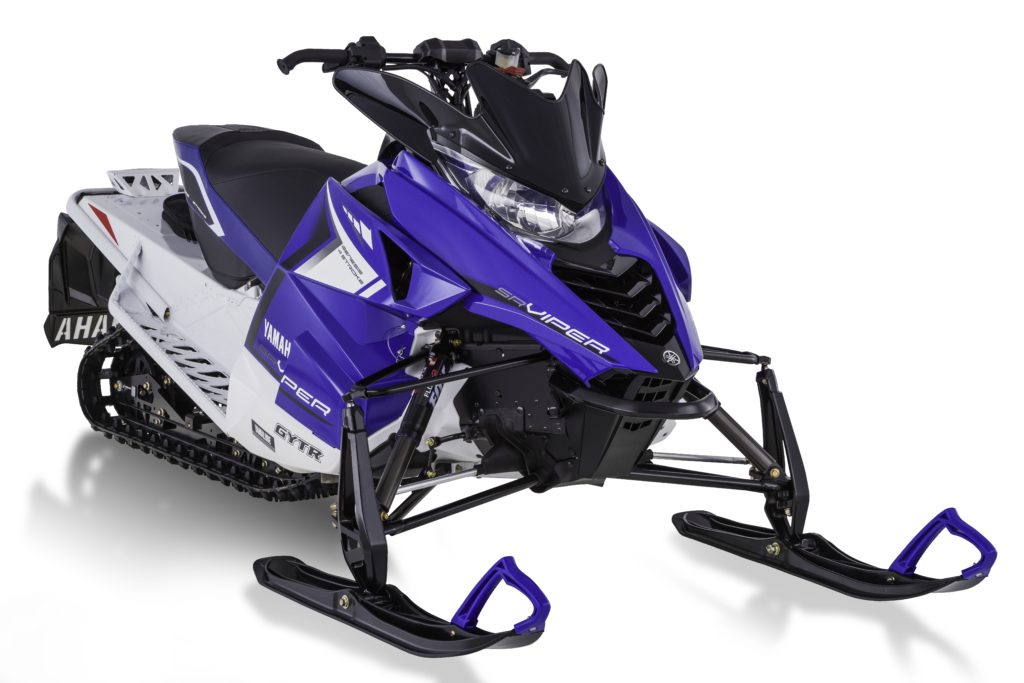
2014 SRVIPER
The industry was rocked during the winter of 2013 when swirling speculation and rumors of a forthcoming joint working relationship between Yamaha and Arctic Cat were confirmed. With “Chicken Littles” screaming the sky was falling, the relationship proved to be a match made in heaven for both companies. The first joint model produced was the SRViper, and it brought immediate and brisk retail sales to Yamaha. The Arctic Cat/Yamaha relationship continues today, and with each model year the fruits of their labor continues to break new ground and elevate the success of both companies simultaneously.

2017 SIDEWINDER
Despite all the success and technological firsts Yamaha has introduced over the past five decades, the company remains
first and foremost an engine manufacturer. They solidified this fact last year when the dropped an absolute power bomb on the industry. The 2017 Sidewinder delivered a level of power that was and is unprecedented. The Genesis 998 triple turbo produced a claimed 180-horsepower, easily making it the most powerful production snowmobile ever. Third party numbers put the power in excess of 200-ponies, and coupled to the smooth and controlled delivery, the Sidewinder was untouchable.




